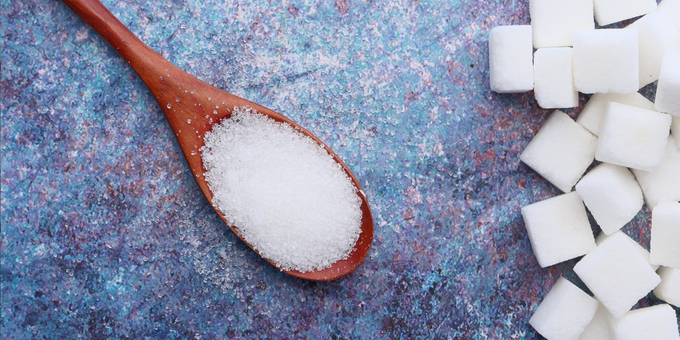If you’re in the process of cutting down on sugar, you’ve probably noticed the masses of conflicting nutritional information and misleading food labels – it can be overwhelming, we know. We’re here to give you the lowdown on sugar consumption.
How much sugar should we be eating?
Ideally, as little as possible. But we know that’s not realistic for everyone – here at I Quit Sugar we aim for between 5 and 9 teaspoons of added sugar a day, and the USDA and European Heart Network suggest the recommended daily intake for to be no more than 6 teaspoons for women and 9 teaspoons for men – this is approximately 25 grams and 38 grams, respectively.

To make it simple, remember that 1 teaspoon is 4.2 grams – meaning any time you see sugar amounts in teaspoons, multiply by 4.2 to get the gram amount. For the reverse, you need only divide by the same amount. We find it a little easier using teaspoons to get a proper visual of what we’re actually eating.
Here’s the concern though - Aussies are getting a lot more than the recommended upper limit, coming in at 15 teaspoons of added sugar each day, more than doubling the 6-teaspoon max for women. This poses a massive threat to public health when considering the fact that excess sugar leads to insulin resistance, which in turn leads to type 2 diabetes.
We advise reducing your fructose consumption down to the smallest amount possible, to avoid the adverse effects associated with it – this includes weight gain, obesity and, as we mentioned above, diabetes. Here are few of the fructose-heavy sweeteners:
- Table sugar: 50% fructose content.
- High-fructose corn syrup: 55% fructose content.
- Agave: 70-90% fructose content. (We know, this one is a popular alternative, but with its high fructose content, it’s not one of our favourites.)
- Maple syrup: 35% fructose content.
- Palm sugar: 35-45% fructose content.

We know sugar can be a tough habit to kick, and that’s why we often cut sugar out completely while we recalibrate our taste buds and free ourselves from that vicious dopamine-seeking cycle. After all, research shows sugar can elicit the same responses as some drugs, including cocaine, by triggering the reward system in the brain in much of the same ways.
To make matters worse, researchers say sugar is one of the major causes of obesity and diabetes, with one study finding countries around the globe are consuming more than 4 times the limit. But it is possible to slash our intake without completely forbidding the substance – and that’s where label-reading comes in.
We’ll show you the ins-and-outs of nutritional labels, including what they’re hiding.
Reading nutrition labels.
Nutrition labels confuse even the most eagle-eyed individuals with their misleading measurements and complex terms, so we’re here to deconstruct it.

Take a look at some of the elements you’ll find on your product’s label:
Amount of sugar: The sugars will be listed on the nutritional panel and it’s one of the most important – and misleading – sections of the label. Our tip is to go for foods with under 5 grams of sugar per 100 grams. The reason is simple: it will weed out most of the hyper-processed, sugar-laden products. Those that remain will have a more balanced profile, less additives and will help you keep within the daily limit. Whether it’s bread, cereal or yoghurt, this approach is one way to stick to your goals. It’s also important to avoid drinking your added sugars, the reason being that liquids tend to have a far greater serving size than their solid counterparts.

Dairy: Note that when it comes to dairy, the first 4.7 grams of sugar will generally be from lactose – this is fine to consume (in moderation, of course). But, after that point, any further grams of sugar will be the actual added sugars. The takeaway from this is to check out all your staples, from yoghurt to cheese, to find out how they measure up when it comes to non-lactose sugars.
Serving size: We don’t know about you, but we don’t usually stop at just one "serving" – these measurements listed could fit in your eye and they certainly don’t reflect the amounts people are generally consuming. That’s why it’s important to take your real serving size into account and adjust the nutritional profile to fit your actual portion. This could mean doubling the sugar, fat and energy stats – just remember to keep it to scale. After all, who would only eat 2 chips from a packet?
The takeaway.
Nutritional labels, sugar intake and measurement conversions can be a daunting part of navigating our sugar-obsessed world, so we hope these tips have helped clear it up.
If you’re in need of a hand to finally ditch your sugar habit, we’d love to invite you to our 8-Week Program. With meal plans, shopping lists and ongoing support, you won’t have to quit sugar alone. If you’re ready to transform your health, both mental and physical, sign up HERE.






Leave a comment (all fields required)